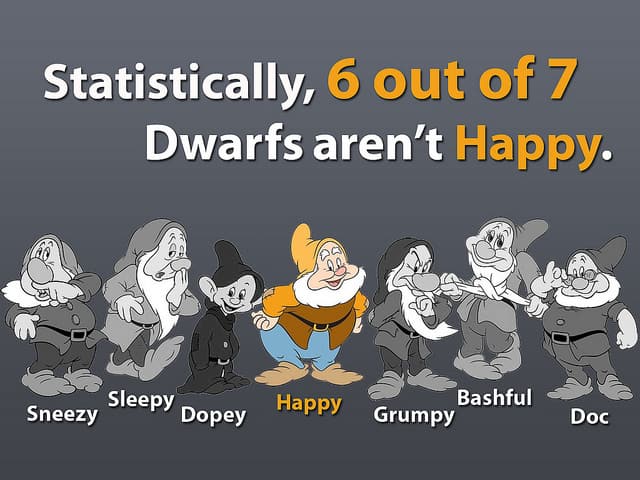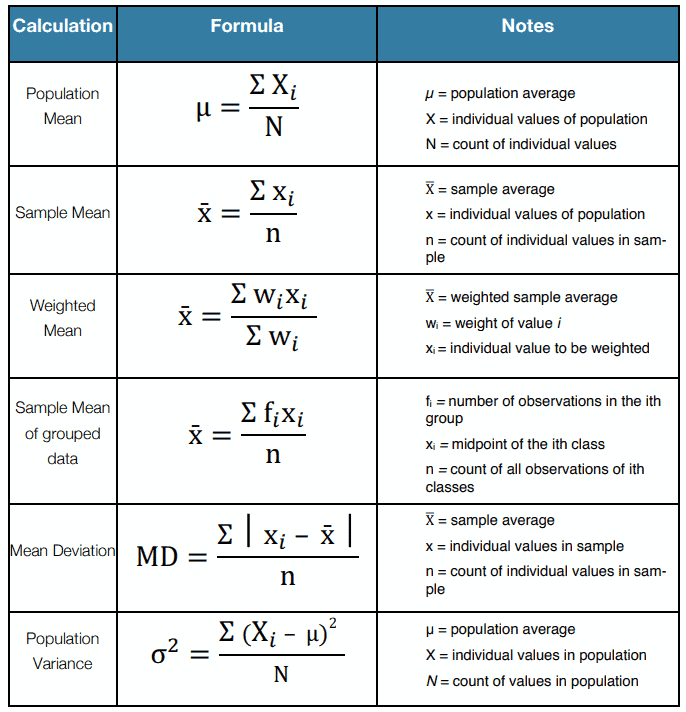
Statistics is the science of gathering, classifying, arranging, analyzing, interpreting, and presenting numerical data to make inferences about the population from the sample drawn. There are basically two categories: Analytical (aka Inferential statistics) and Descriptive (aka Enumerative statistics).

Not all statistics are the same. It’s useful to discern between the various types when doing an analysis. Remember:
- A statistic is a value gathered from the sample.
- A parameter is a value found in the population.

Analytical aka Inferential Statistics
What are Inferential Statistics?
Inferential statistics use probability to determine whether a particular test or outcome is representative of the population from which the sample was drawn. Then, you can make inferences about the population based on the data.
Once you have made your estimates about the population, assign a margin of error or confidence interval to the analysis to show your confidence level.

Hypothesis testing, probability distribution, regression analysis, and correlation testing belong to this branch of statistics.
- Sometimes it is difficult to study an entire population– ex., all of America. So, we use a sample to infer things about the whole.
- Most of the time, we use a sample to describe the whole population.
- Developing a confidence interval is an example of using Analytical statistics.
When do you use Inferential Statistics??
Inferential Statistics is often used when investigating an entire population is not possible; therefore, it projects the information from the sample to the whole population. That way, it is useful in concluding and also decision-making about the entire population based on sample data.
In other words, this school of statistics is a way to conclude a population by studying a sample of its units.
Before moving on to the examples, let us review what we have learned thus far in our studies. First, there are two types of statistics: Analytical and Descriptive. In the scope of this section, we concern ourselves with the Inferential branch of the Analytical side. Second, this method of inquiry assesses the probability of an event happening at some point in the future. It does this by testing a sample of a population. Once done, we use the result to describe the entire population.
Examples of Inferential Statistics in a DMAIC Project
Example: Let us assume the population in Hartford County is 100,000. The state health department wishes to know how many people in the county have high blood sugar.
It would not be possible to test the blood sugar of every individual in the county, and it is also not practical to test the blood sugar of 100,000 people.
The best solution is to select 1000 samples from 100,000 and test the blood sugar as per the instructions of the local health department.
For instance, let us assume 17% of people with ±1 errors have high blood sugar in the sample of 1000.
We can use this information to infer or draw a conclusion about the total population of 100,000 in Hartford county.
More precisely, we could say that 95% confidence, 17% of people live in the county has high blood sugar within a 1% margin of error.
Furthermore, to increase the confidence of the inference, you should take a larger sample size from the population. By increasing the sample size, we can better predict the high blood sugar of individuals in the population.
Descriptive (aka Enumerative Statistics)
What are Descriptive Statistics?
Descriptive Statistics presents data in helpful mediums like a summary that uses numbers and graphs.

In the descriptive method, the data is tabulated, organized, and presented in the form of charts and graphs to summarize the data under consideration for the whole population. Furthermore, no inferences are made about the units, which are not observed.
Typically used for the whole population, not just a sample.
- Using a graph or population parameter
- Organize or summarize information
- Measure of frequency (Count, percentage, frequency)
- The measure of central tendency (Mean, median, mode)
- Measure of dispersion or variation (Range, variation, standard deviation)
- Graphs, charts & plots

When do you use Descriptive Statistics??
Descriptive Statistics is used to describe the traits of the sample or population. It also describes the basic aspects of the situation, and the results are present in the form of charts, graphs, and tables.
Examples of Descriptive Statistics in a DMAIC Project
Example: Suppose a supermarket sells 100 milk cans daily, out of which 30 are from XYZ company.
Data representation: 30% of milk cans sold come from XYZ company.
In addition, if the same supermarket conducts a study on the number of sodas sold over one week, they would find that an average of 20 sodas are sold each shift. The average is an example of descriptive statistics.
The same data can be presented in a graphical model like a histogram, pie chart, or bar graph. Furthermore, the visual representation helps the organization compare different data sets involving milk cans, which allows them to identify changes in the quantity sold over a period of time.
Further, refer here for more examples.
Key Differences

Inferential Vs Descriptive Statistics Video
Helpful Articles
http://www.micquality.com/six_sigma_glossary/analytical_descriptive_statistics.htm (Descriptive vs. inferential statistics)
ASQ Six Sigma Green Belt Kinds of Statistics Questions
Question: Which of the following statistics summarizes the population?
(A) categorical
(B) descriptive
(C) probabilistic
(D) control
Answer:
B: Descriptive statistics summarize a population. The other options are nonsensical.


Comments (8)
3. The percentages of total quality cost are distributed as follows: prevention 12%, appraisal 28%, internal failure 40%, and external failure 20%. One would conclude:
a. More money should be invested in prevention
b. Expenditures for failures are excessive
c. The amount spent for appraisal seems about right
d. Nothing
Hi Curtler,
Would love to help. Please join my Custom tier for unlimited email support.
Best, Ted.
Ted, What is the custom tier?
Hi Terry,
Thank you for the question. The custom tier is a version of PYSSGB where candidates can get additional support. Right now you are in the Guided tier so you get access to thousands of questions across dozens of practice quizzes and exams as well as access to study materials, member forums, full question walkthroughs, and the ability to ask questions on any of the practice exams provided.
The custom tier has everything the guided tier does but enables you to ask any question you want about Six Sigma. You also get a 1:1 conversation with me to plan your strategy. This is helpful for students who feel less confident in their original instruction and need additional help preparing for their exam beyond what is offered in the guided package. In the comment above, Curtler is asking about a problem set from outside my course, hence my recommendation for the custom tier.
If anyone is interested in the custom tier, checkout is here.
Best, Ted.
Hi Ted,
Before I make my decision, I would like to ask if your quizzes and mock tests includes an explanation of the correct answer as well?
Yes, they do. And if there’s any confusion you can leave a comment on the quiz page and we’ll get right back to you!
The link for descriptive statistics takes you to the same place as the previous link. No new material presented.
Hi Douglas,
Due to feedback that we had too many articles I’ve been combining several into longer topics. In some cases the links haven’t caught up yet. Can you tell me what page you’re referring to (where the previous link is) and I’ll update.
Best, Ted.